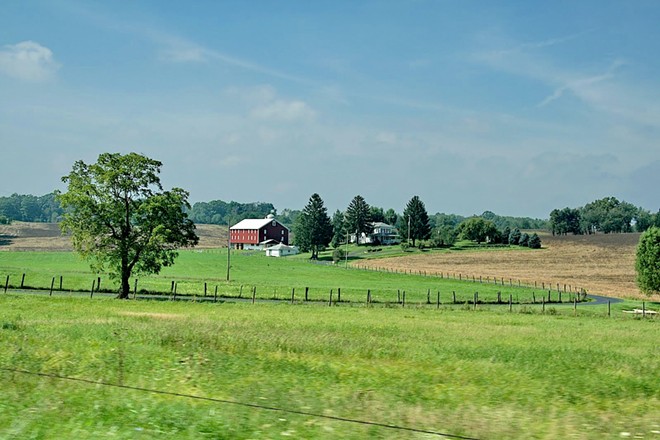In Ohio and across the country, 77% of rural counties have been losing working-age people since the Great Recession of 2008-2009, a new demographic analysis says. And if nothing changes, the problem will get much worse, it projects.
However, the study proposes a solution — immigration reform.
The analysis of Census Bureau and other data was done by FWD.us, a bipartisan nonprofit that advocates for immigration and criminal justice reform — two arenas which at least some members of the two parties agree are in need of improvement.
Reasons for population shifts are complex. But it seems clear that a big reason why rural communities are losing people is straightforward — they’re leaving to find work.
In the decade that ended in 2020, 700,000 more people left rural communities than moved into them, and they left behind a population that was far older. Over that decade, the number of people over 65 in rural counties rose from 26 per 100 working-age people (15-64), to 40 per 100 working-age people, the analysis said.
The country’s rural populations aged at a far more rapid pace during that period than did the country as a whole. In 2010, there were 19 Americans over 65 for every 100 who were working-age. That rate increased to 25 a decade later, the report said.
A lack of adequate broadband internet or other technological infrastructure, fewer colleges and universities, and even a dearth of entertainment options might be motivating younger people to leave their rural communities. And the departures are doing damage.
“People are leaving rural America for a variety of reasons: education, work, business opportunities, family,” the study said. “This is not only a population loss, but also a real loss of people, deeply felt by the communities in which they had lived much of their lives.”
Ohio’s rural communities have fared better than those nationally since the Great Recession, but only a little. Those communities in the Buckeye State lost 6.8% of their working-age population over that period, while U.S. rural communities lost 8%, according to the analysis.
And the problem in Ohio is expected to become much worse by 2040. It’s projected to lose almost 19.4% of working-age people since 2010 in its 17 rural counties.
That compares to a loss of 11% in U.S. rural counties as a whole over the same period.
However, not all rural counties are losing working-age people as a percentage of their population.
In Ohio, for example, Holmes County gained 1,100 working-age residents between 2010 and 2020. That’s likely due to the county’s large population of Amish, who are known for large families and a high rate of church membership.
No other rural Ohio County has avoided steep drop-offs in working-age population. But some in other states have because of immigration.
The FWD.us analysis highlighted Franklin County, Alabama, which is located in the western Appalachian Mountains. Between 2010 and 2020, it saw an influx of about 100 mostly Hispanic immigrants each year.
Many worked in the meat-packing industry. But as they came “they started opening little shops, grocery stores, furniture stores, restaurants, bakeries, places like that. We’ve now seen the entire downtown area be brought back to life, and the majority of that revitalization can be attributed to the immigrants who moved here,” the report quoted the town librarian as saying.
A big reason why immigrants add to the working-age population is because they tend to be a lot younger than natural-born Americans.
A 2020 analysis by the Pew Research Center charted to the two populations.
The bars for 10-year age groups among natural-born Americans between 15 and 64 were more or less the same. Meanwhile, there was a big outward bulge for immigrants — especially those between ages 25 and 59.
The FWD.us analysis models the effect of adding 100 immigrants to Ohio’s rural counties each year. Shortly after 2030, it would mostly level off working-age losses at about 11% from where that population was in 2010.
If the counties receive 200 immigrants a year, it would take about as long to level off the working-age losses, but they wouldn’t be as deep — a decrease of 8.7% from 2010.
In addition to potentially benefiting Ohio’s rural communities, many of the state’s farmers have been screaming for more immigrant help to get their crops out of the field.
“The reality today in United States modern agriculture is that food consumed by Americans is and will continue to be harvested by foreign hands,” Erie County vegetable grower Bob Jones said during a 2022 press conference urging immigration reforms for farmworkers. “Americans just simply are not interested in working in the field, in the greenhouse, or the packing house.”
He added, “We are either going to import workers or we’re going to import food. The choice is really that simple.”
Originally published by the Ohio Capital Journal. Republished here with permission.










